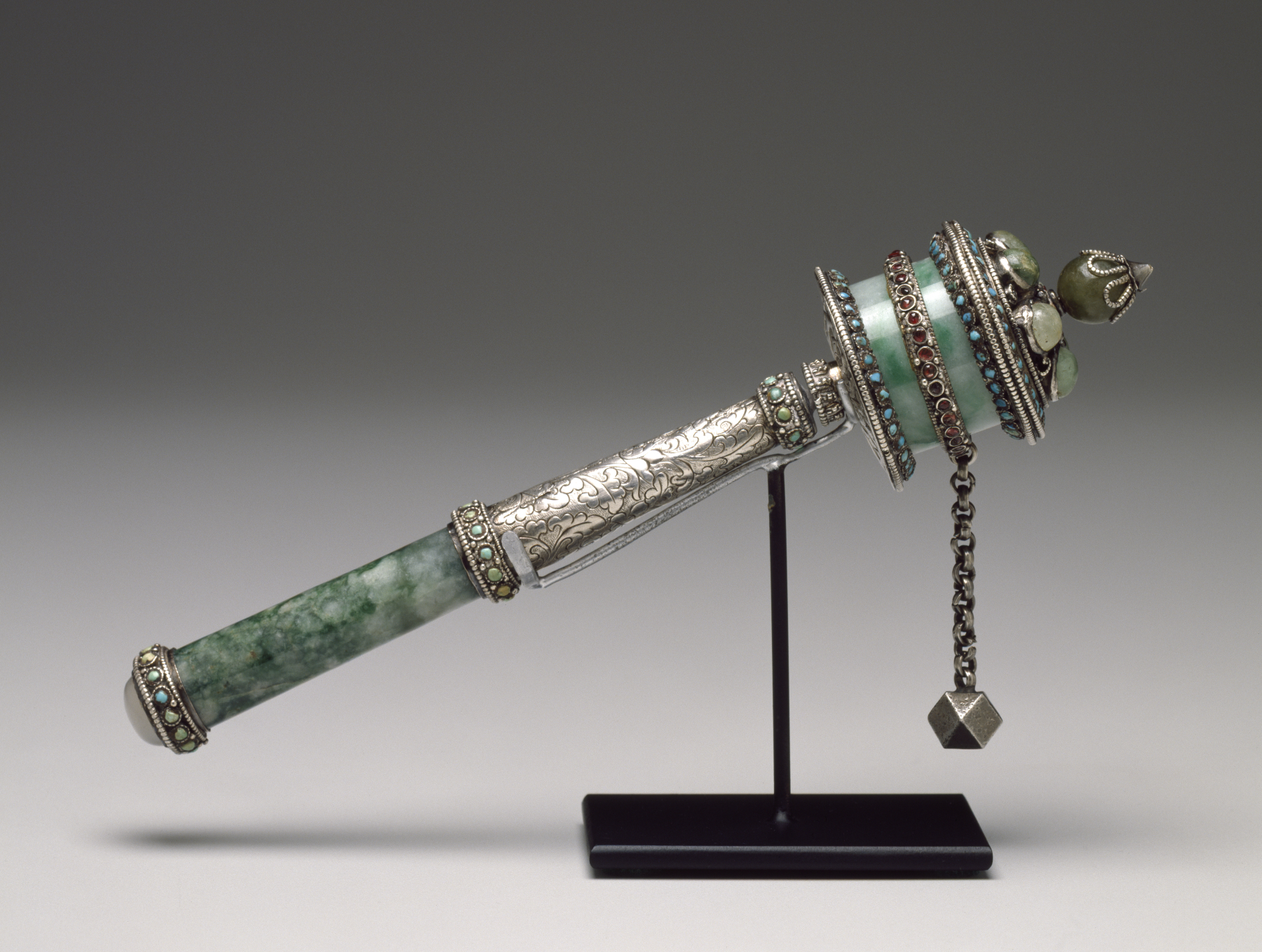Portable Prayer Wheel
(India, Nepal, and Tibet)
Just as the Buddha symbolically turned the wheel of the Law when he preached his first sermon and taught the way to enlightenment at Sarnath, India, so pious Tibetan Buddhists literally rotate a wheel to earn the merit that will enhance the likelihood of enlightenment. The Tibetan prayer wheel, however, is not an ordinary wheel but a cylindrical metal drum that rotates around an axis. There are two such wheels, those that are immovable and placed inside or outside a shrine and those that are carried by hand, like this example. It is not an uncommon sight to see a Tibetan constantly rotating the hand wheel and chanting a mantra as he or she walks, in the same way the pious Catholics use their rosaries.
This particular example is a handsome ensemble of jadeite and silver inlaid with more jadeite, turquoise, and rubies. Part of the handle is in silver chased with a foliate design reminiscent of Derge work, but it could have been made elsewhere. Therefore, it is extremely difficult to be certain of the place of manufacture or the date of this work. It could have been made somewhere in eastern Tibet or even Mongolia, where such gem-embellished ritual implements have remained very popular. Whatever its exact date or provenance, it is an elegantly sumptuous and well-crafted object that was probably made for a wealthy and important patron.
Provenance
Provenance (from the French provenir, 'to come from/forth') is the chronology of the ownership, custody, or location of a historical object. Learn more about provenance at the Walters.
John and Berthe Ford, Baltimore; given to Walters Art Museum, 2002.
Exhibitions
| 2019 | Power of Intention. Rubin Museum of Art, New York. |
| 2010 | Pilgrimage and Buddhist Art. Asia Society, New York. |
Conservation
| Date | Description | Narrative |
|---|---|---|
| 6/28/2017 | Examination | Cleaned for exhibition |
| 6/28/2017 | Examination | The silver had tarnished and had some entrapped polish residues. The silver was cleaned using precipitated chalk in a water:ethanol slurry. The cleaned silver was coated with a protective lacquer. |
Geographies
Mongolia
(Place of Origin)
Tibet (Place of Origin)
Measurements
L: 8 11/16 × W: 1 3/4 × D with ball and chain: 3 3/4 in. (22 × 4.5 × 9.5 cm)
Credit Line
Gift of John and Berthe Ford, 2002
Accession Number
In libraries, galleries, museums, and archives, an accession number is a unique identifier assigned to each object in the collection.
In libraries, galleries, museums, and archives, an accession number is a unique identifier assigned to each object in the collection.
57.2285


